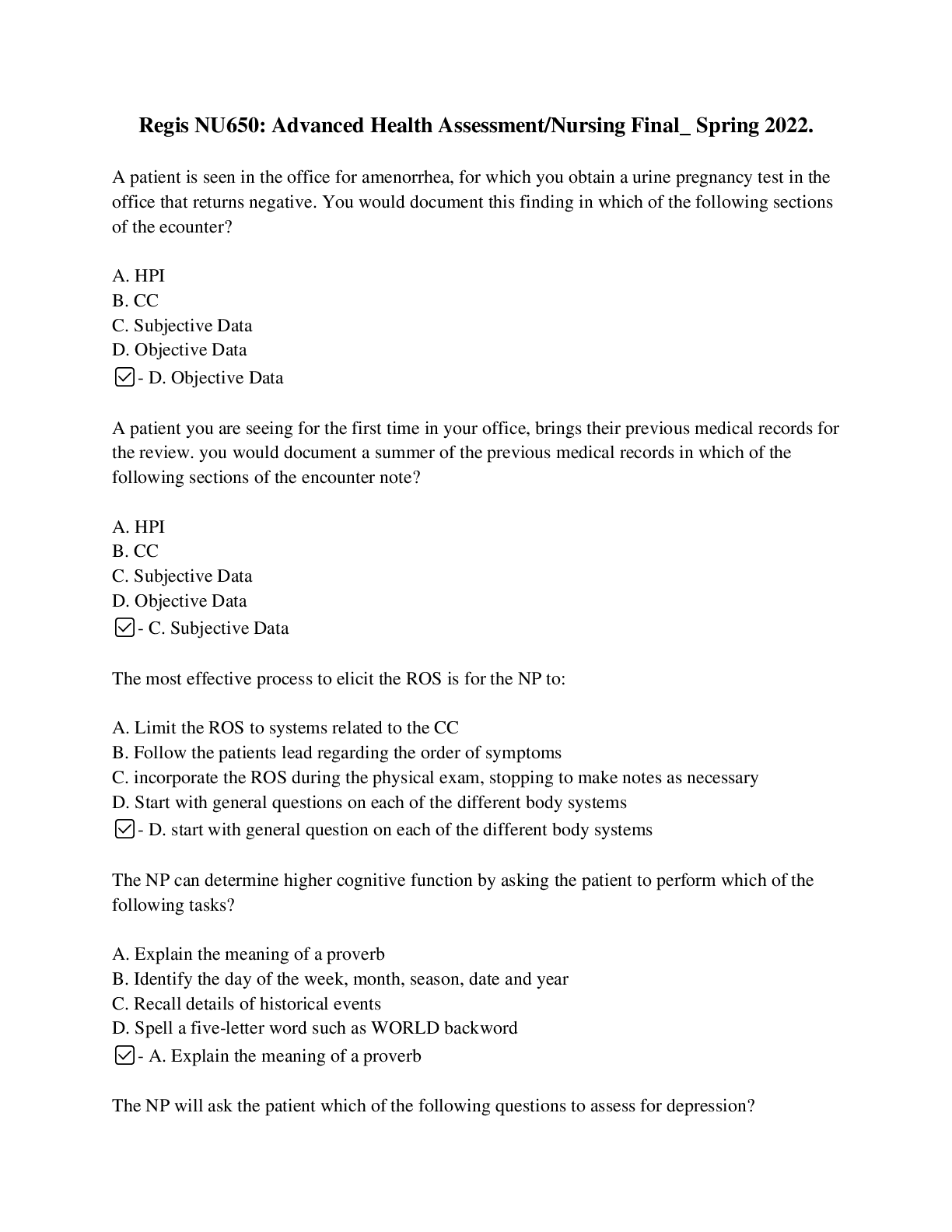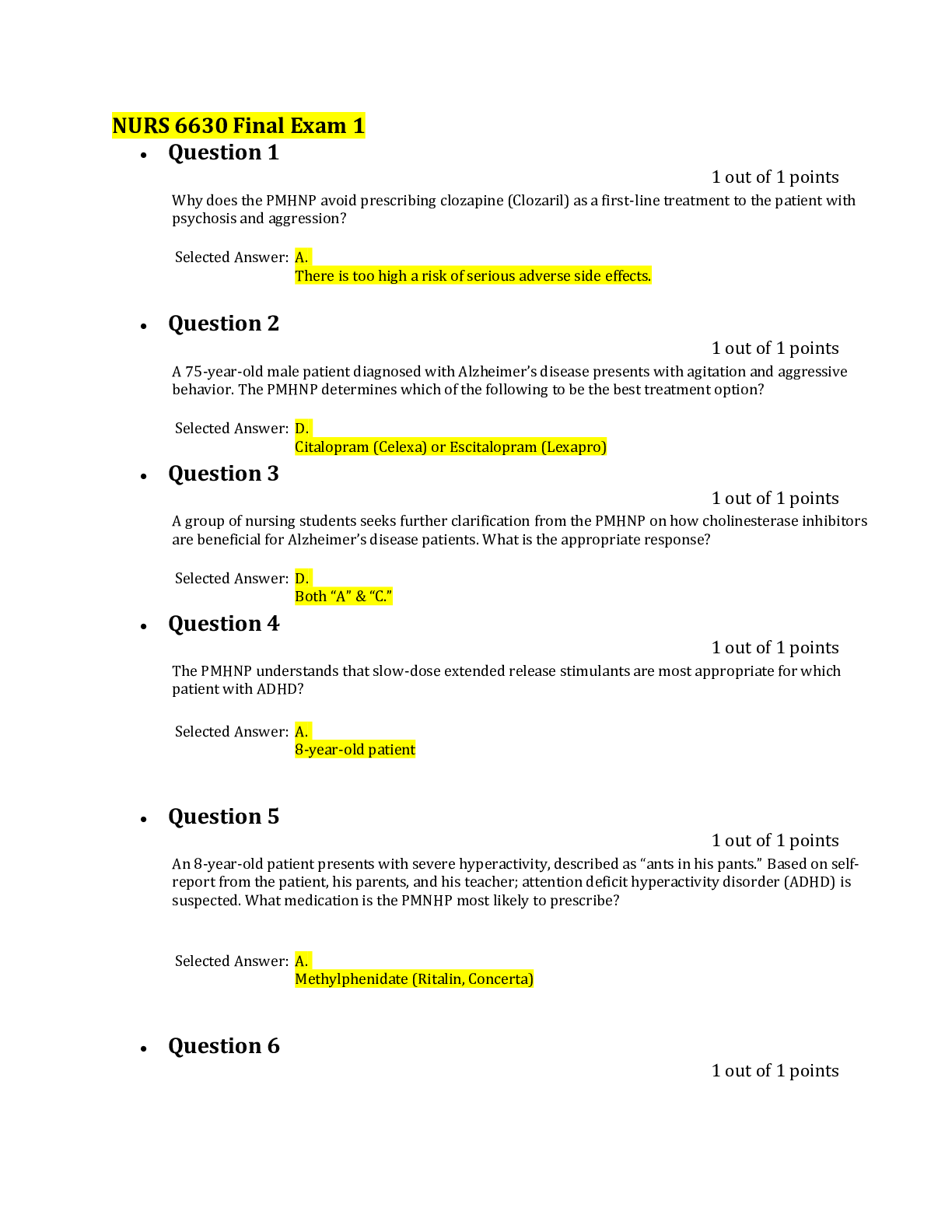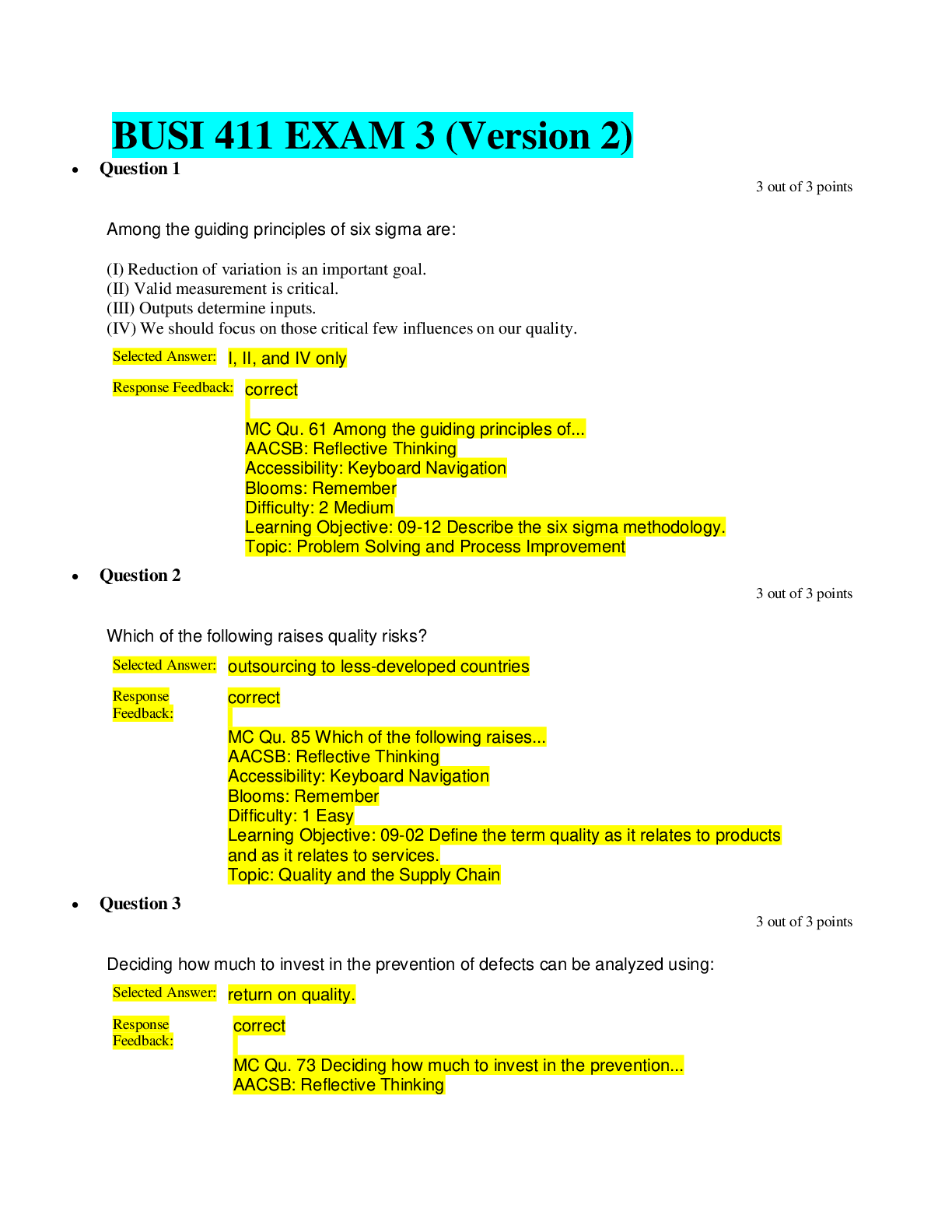Philosophy > EXAM > PHIL 347N Week 4 Assignment: Deductive Reasoning Worksheet, Attempt Score 75 Out of 75. (All)
PHIL 347N Week 4 Assignment: Deductive Reasoning Worksheet, Attempt Score 75 Out of 75.
Document Content and Description Below
Part A. Deductive Reasoning Instructions Select the correct answer for each multiple choice question. Example Select the answer that represents the proper standard form for the following sta... tement: “A few bears are not mammals.” a. Not all bears are mammals b. Most bears are mammals c. Some bears are not mammals 1. A deductive argument is one in which the arguer attempts to demonstrate that a. The conclusion necessarily follows from the premises b. The conclusion probably follows from the premises c. The conclusion is a projection based on the premises 2. Which of the following are forms of deductive arguments? a. Inductive generalization and truth-functional arguments b. Categorical syllogisms and truth-functional arguments c. Analogical arguments and categorical syllogisms 3. We can identify an argument as truth functional if a. The conclusion is of the argument probably true b. There are at least four claims in the argument c. The claims relate to all, none or some members of a category d. The claims use operators such as “or” “if/then” 4. We can identify an argument as categorical deductive if a. The conclusion is of the argument probably true b. There are at least four claims in the argument c. The claims relate to all, none, or some members of a category d. The claims use operators such as “or” “if/then” 5. Identify the kind of argument: “The airbag in Jose’s car failed to deploy when he crashed, and anyone whose airbag fails to deploy in a accident will get hurt. Thus, Jose certainly got hurt. a. Inductive generalization b. Categorical deductive c. Truth-functional deductive 6. Identify the kind of argument: “Either Naomi goes bowling or Miguel studies. Miguel does not study and Naomi goes bowling. It follows that, if Miguel does not study, then Naomi goes bowling. a. Inductive generalization b. Categorical deductive c. Truth-functional deductive 7. Select the answer that represents the proper standard form for the following statement: “Only cows are mammals” a. All cows are mammals. b. All mammals are cows. c. Some mammals are cows. 8. Select the answer that represents the proper standard form for the following statement: “Ducks are the only birds in the pond.” a. All ducks are birds in the pond. b. No birds in the pond are not ducks. c. All birds in the pond are ducks. Part B. Truth-Functional Claims Translations: Simple Claims For the purposes of this document, we will use keys common on most computers. • The tilde (~) remains the same, but and will be represented by &, or will be represented by V, and If, then will be represented by >. • Use capital T for true and capital F for false (3 points x 5 = 15 total points) Instructions The simple claims below are from the textbook Exercise 7.6 (page 167). Designate a letter to represent each simple claim, and then translate the truth-functional claims into symbolic forms. Be sure to provide a breakdown on which claims are represented by which letter. Example People often think that all claims are either facts or opinion. Answer: F O F = People often think that all claims are facts. O = People often think that all claims are opinions. 1. You will crash the car unless you put on the brakes. (You will crash the car, or you put on the brakes.) 2. The cat is in the hat and the Grinch stole Christmas. 3. If you study, you will pass the exam . 4. Jane says she isn’t happy, yet she is laughing all the time 5. The car does not decelerate. Part C. Truth-Functional Claims Translations: Identifying Operator Identification For the purposes of this document, we will use keys common on most computers. • The tilde (~) remains the same, but and will be represented by &, or will be represented by V, and If, then will be represented by >. • Use capital T for true and capital F for false (4 points x 5 = 20 total points) Instructions From the textbook Exercise 7.11 (pages 170–171), follow the directions for claims below. • Be sure to identify the claims represented by the capital letters you have chosen as well as the type of main operator (i.e. conjunction, disjunction, negation, or conditional). Example You do not feel safe in the dark, yet your mission is to go into that cave. 1. These apples are neither Granny Smiths nor are they Honey Crisps. 2. You do not feel safe in the dark, yet your mission is to go into that cave. . 3. Only if I do not pass the exam will I miss the next course. 4. If you are not my friend, then you are against me. 5. It is not the case that if I pass the exam then I can graduate. [Show More]
Last updated: 2 years ago
Preview 1 out of 5 pages

Buy this document to get the full access instantly
Instant Download Access after purchase
Buy NowInstant download
We Accept:

Reviews( 0 )
$10.00
Can't find what you want? Try our AI powered Search
Document information
Connected school, study & course
About the document
Uploaded On
Jan 07, 2020
Number of pages
5
Written in
Additional information
This document has been written for:
Uploaded
Jan 07, 2020
Downloads
0
Views
135



















 (1).png)



